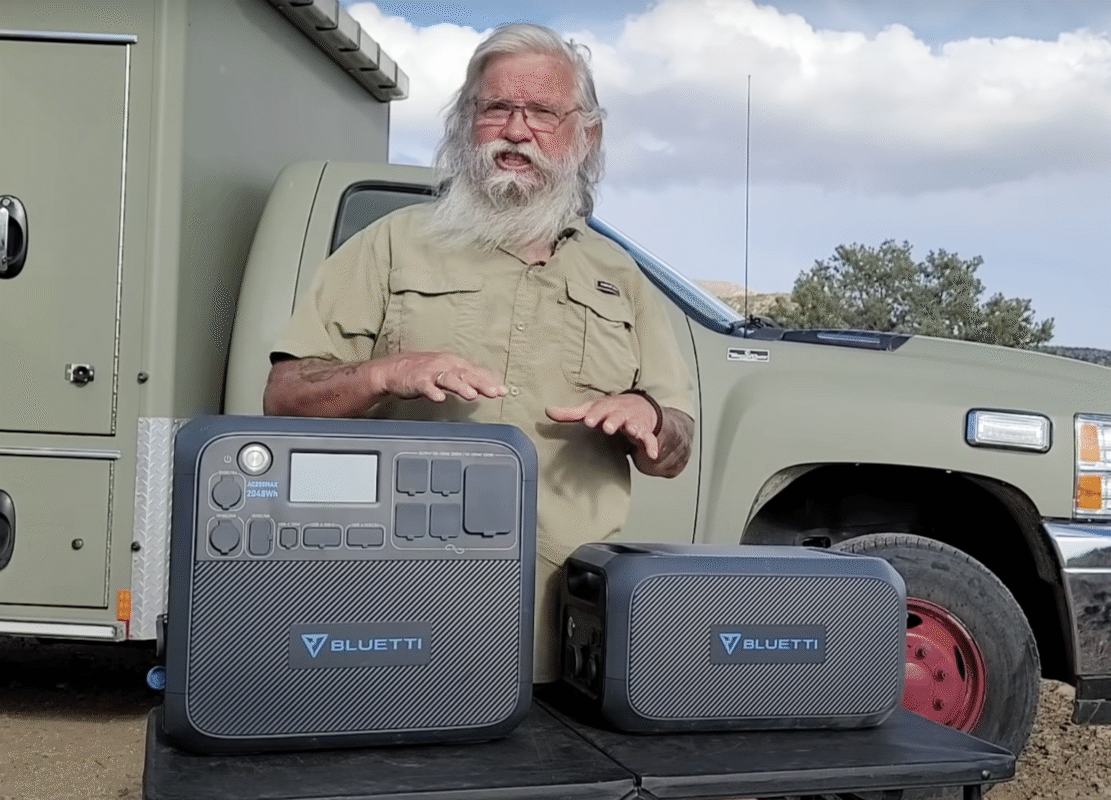
THIS IS MY REVIEW of the Bluetti AC200MAX Expandable Power Station. The AC200MAX is the upgrade of the AC200P, correcting some of its shortcomings. It has a massive 2,048 Watt hour LiFePo4 battery rated for 3,500+ life cycles to 80%. Not only that, the system can be expanded with Bluetti’s B230 plug-in 2,048Wh battery packs for up to 8,192Wh! The AC200MAX also includes a 2,200W full power pure sine wave inverter. Its MPPT charge controller has been upgraded to handle up to 900W of solar input. And there’s now a Bluetooth connection to the Bluetti smartphone app (Android and Apple).
Is one panel enough to charge the AC200MAX?
To my mind, the biggest problem with the AC200P was the fact that you had to buy three solar panels to be able to charge it at all. That was going to be really hard for a lot of people to do. Bluetti claims to have fixed that with the AC200MAX, so I tested it.
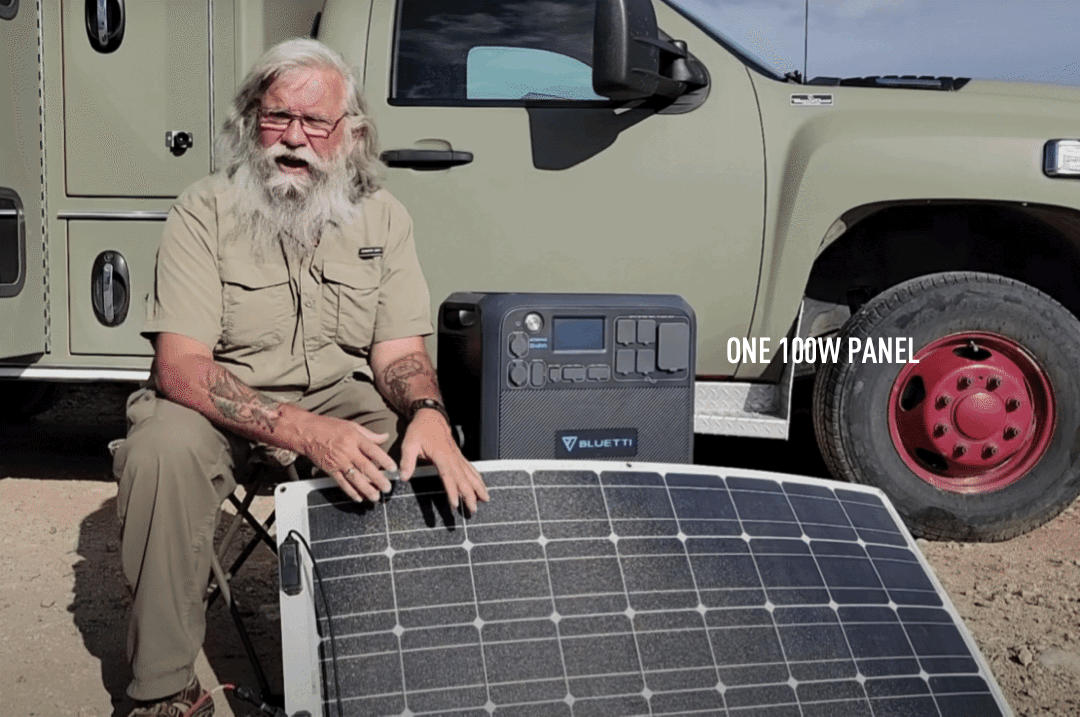
Any power station worth its salt should be able to work with any brand of solar panel. I just happened to have a 100W Renogy flexible panel I was testing for something else. A 100W panel by itself is kind of on the weak side for a battery this large, but it’s the foundation of many people’s solar power system. If 100W is what you have, it’s where you start, then add panels as you have the money. I wanted to see if the AC200MX even recognizes a “lowly” 100W panel and will accept power from it. And it did. The AC200Max requires only 10 Volts of input, and just about any solar panel can do that—as long as there’s enough sunlight.
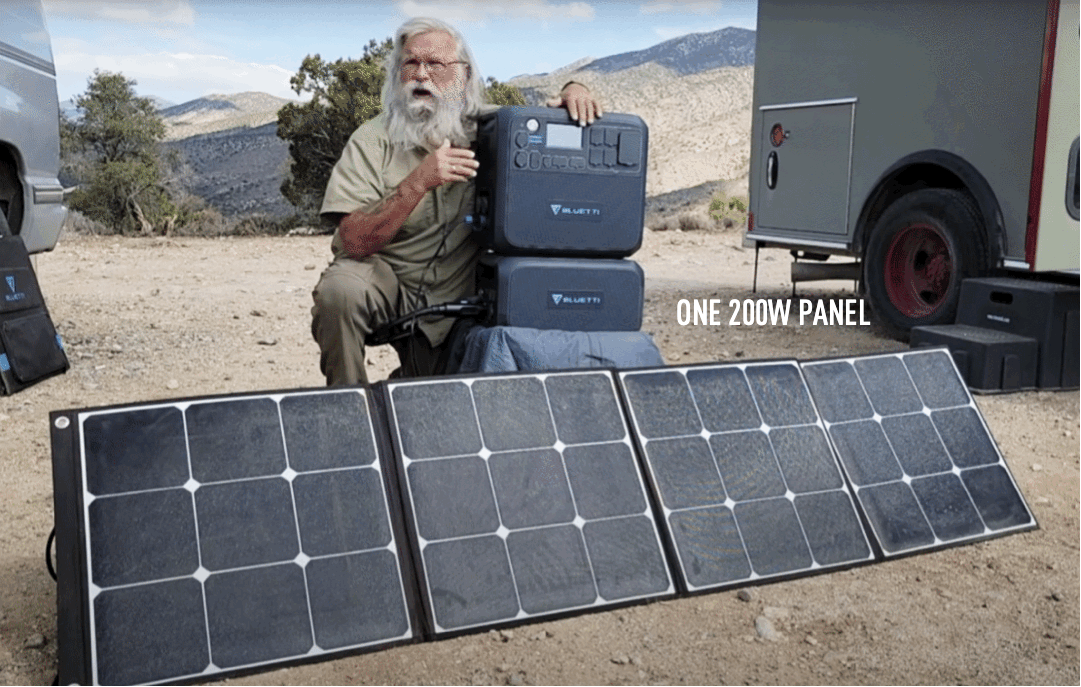
Next I tried a single 200W Bluetti panel that, under that day’s conditions, output 160 to 166 Watts. And it charged just fine.
More power!
Then I plugged in the B230 expansion battery. Of course, it’s charged via passthrough from the AC200Max, and that charging is governed by a prioritizing system in the main unit’s software: AC200Max first, B230 second, because you don’t want to run down the main unit to where it affects the built-in charge controller and inverter.
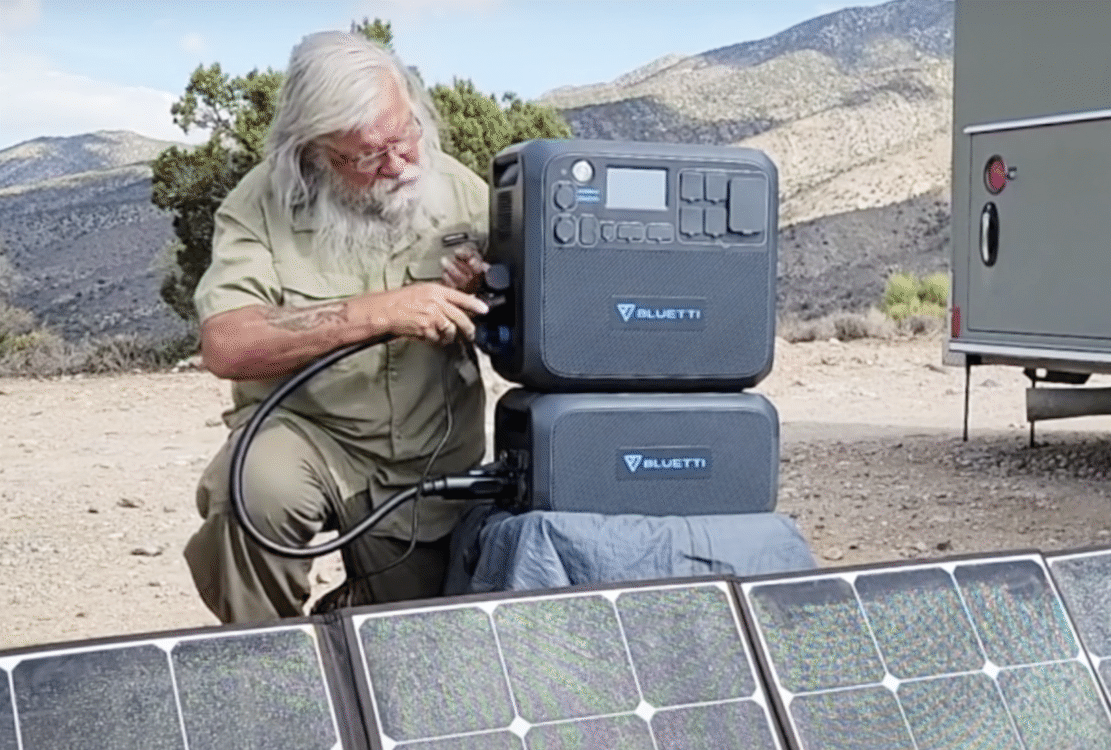
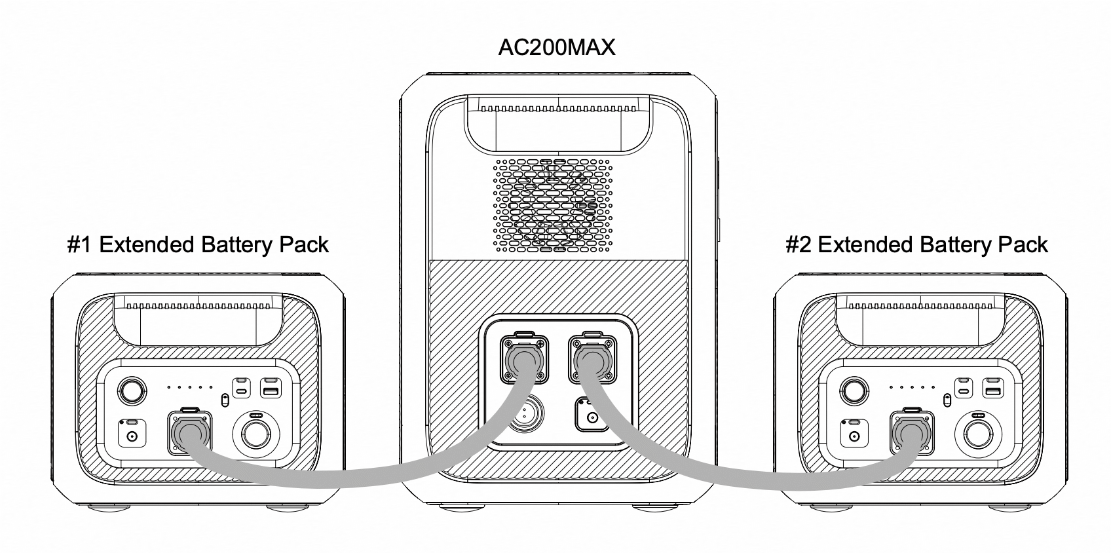
Even with just the single 100W solar panel the B230 was charging—under our sunlight conditions. Naturally, the single 200W panel also worked well.
Out of curiosity, I also connected the three 200W panels Bluetti required for the AC200P. Under the late afternoon conditions at the time, the panels generated 450-520W. When I started charging, the AC200MAX was at about 55% power and the B230 at about 40%. By sundown the B230 was at 100% and the AC200MAX at 90%.
Other ways to charge
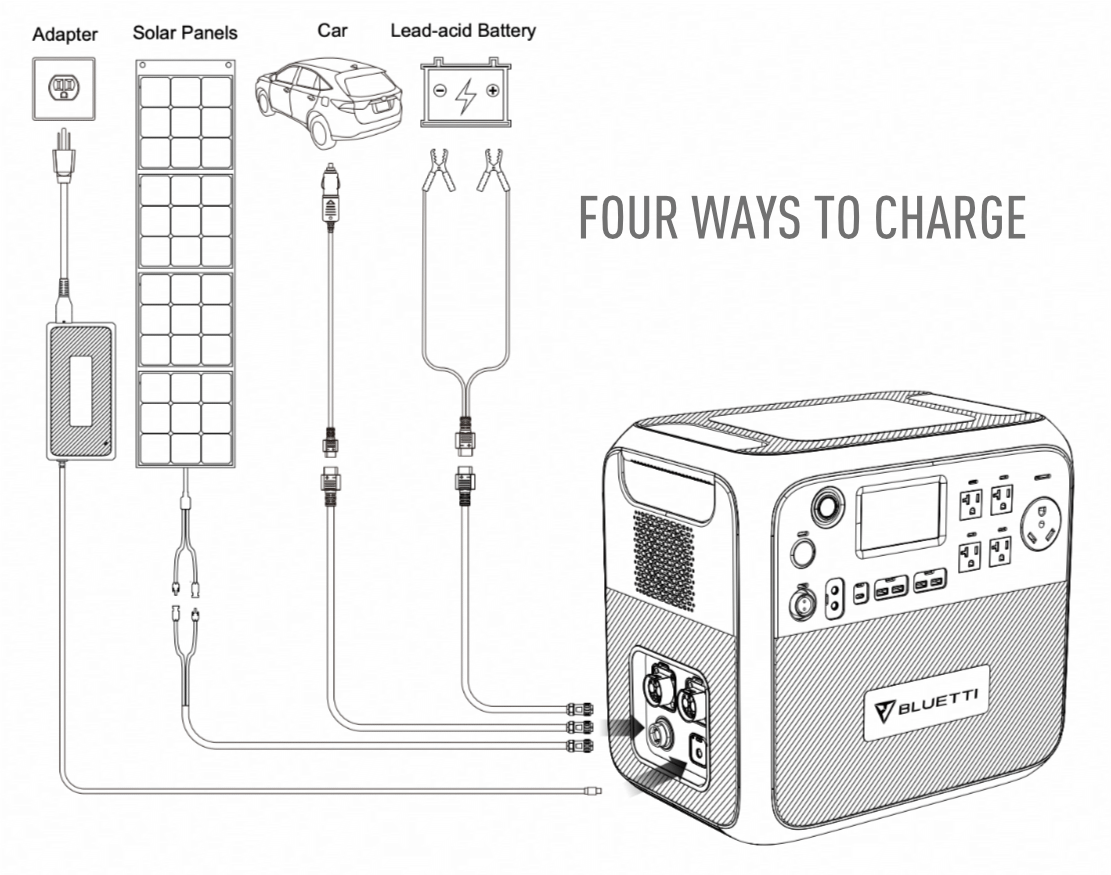
Besides straight from solar panels, you can charge this Bluetti system via the AC adapter plugged into shore power, a generator or whatever. The adapter puts out a maximum of 500W. You can also use the 12V vehicle accessory plug and charge while driving. Or you can clip the Bluetti to a deep cycle lead-acid battery. Very flexible.
As a test, I connected the AC200MAX to the electrical system in my ambulance: solar power to my batteries, from the batteries to the inverter (that produced AC power), and from the inverter to a power strip where I plugged in the Bluetti AC converter. It charged easily.

Your content goes here. Edit or remove this text inline or in the module Content settings. You can also style every aspect of this content in the module Design settings and even apply custom CSS to this text in the module Advanced settings.
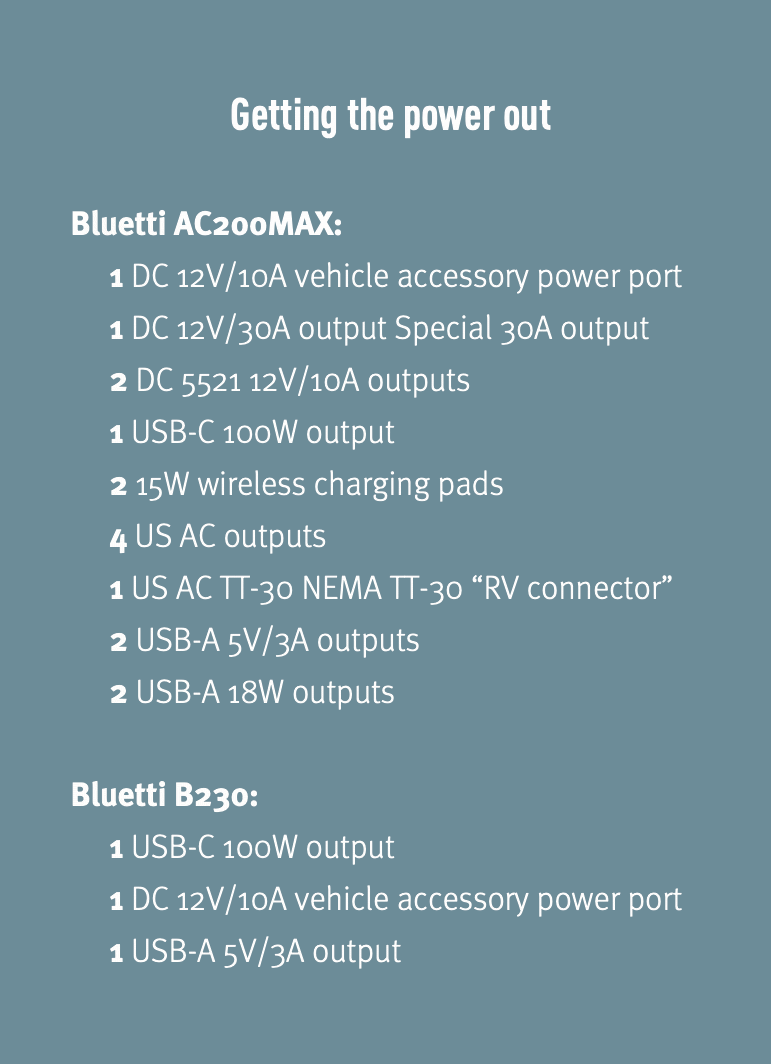
Using all that power
So just to show you that the Bluetti AC200MAX will run my microwave, here it is plugged into one of the AC outlets. You can see here it’s drawing around 1,500 Watts. The AC200MAX started at 73% and after three minutes we’re down to 69%. This Bluetti easily runs the microwave without an enormous impact on it. And an InstaPot drawing 690W was also not a problem.
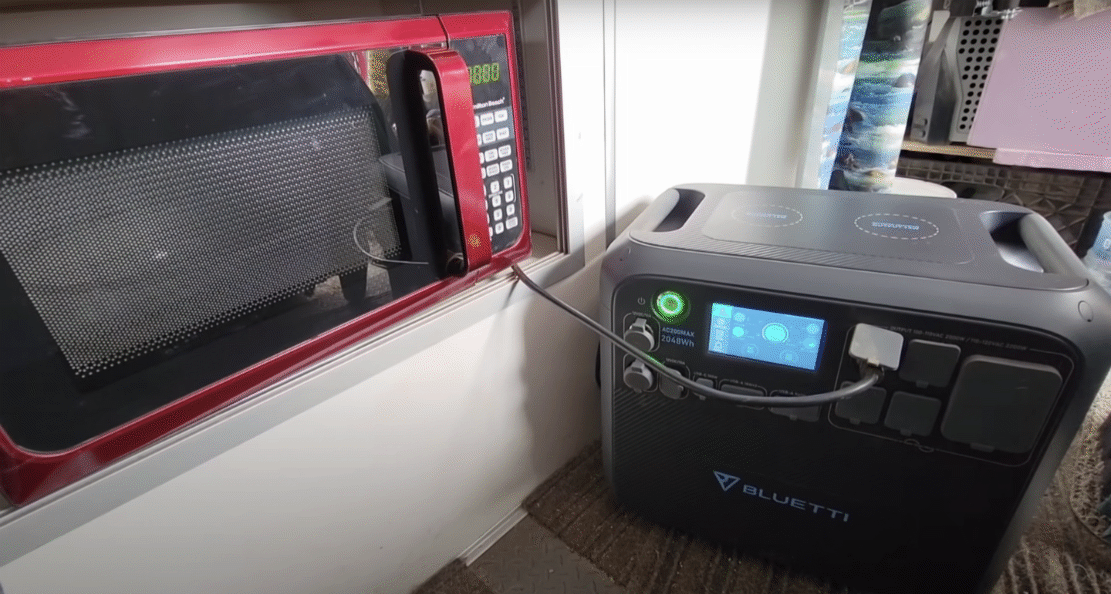
Conclusions
So I’ve had some time with the AC200MAX and B230 battery pack and we’ve looked these over. They’re fantastic units. The AC200MAX solves all the problems of the AC200P by allowing you to use any size solar panel that you have, and any number of solar panels up to 900 watts.
This thing charges fast on 600 watts so you can get it recharged in a day, no problem, even with that 2,048Wh battery. That’s 170Ah, which is enormous enormous, especially if you consider you can use nearly all of that, unlike with lead-acid batteries that shouldn’t be discharged below 50%. If you are a power user this is probably enough for you.

Another big step forward is the addition of the the 30A AC outlet. That’s wonderful if you have an RV. Or if you have a home and you can wire it for a 30 amp service, and you want to just keep this on hand for your off-grid cabin in case power goes out, this is a fantastic choice. If 2,048Wh isn’t enough in those cases, adding one or two B230’s doubles or triples the available power.
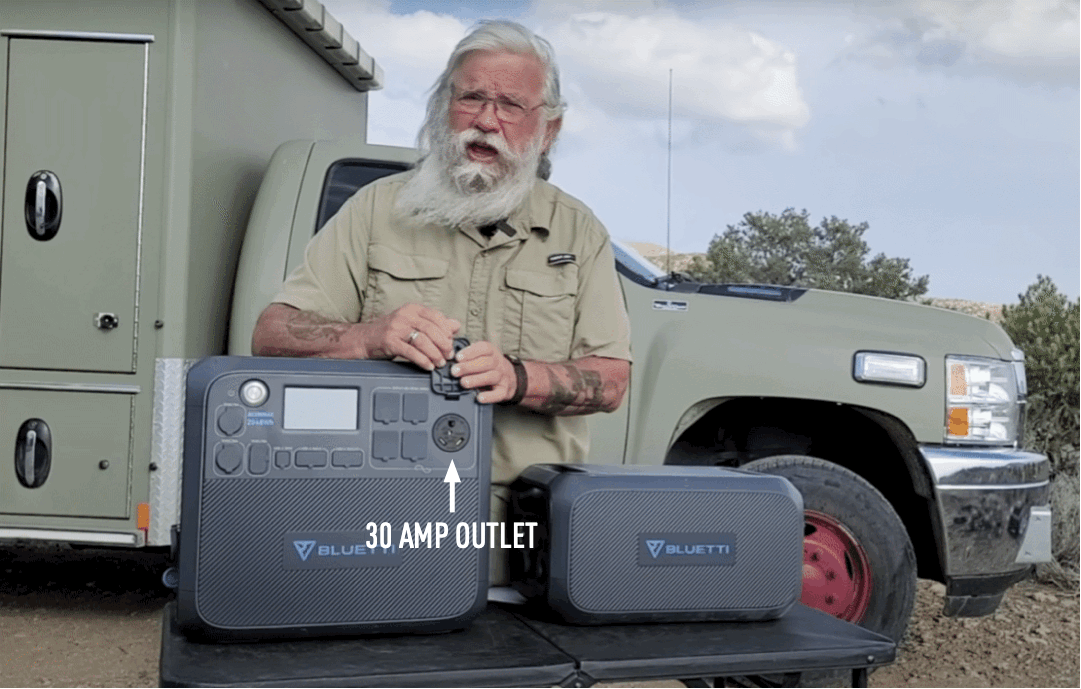
The Bluetti is rated for a whopping 3,500+ life cycles to 80%. Meanwhile, competitors like the Jackery 1500 will give you only about 500 cycles, and the EcoFlow Delta will give you 800. That’s because neither one of them uses LiFePo4 batteries. Yet they cost almost as much.
Not for everyone
Now, for most of you the Bluetti AC200MAX is probably way more than you need. And it probably costs more than you might have, particularly if you don’t even have solar panels yet. Power stations are certainly convenient and easy to understand, and if you want to go that way there are less powerful Bluetti system that fit your needs and budget better. But you might come out farther ahead if you assemble a solar setup from separate components.
I’m not telling you what’s best for you because I don’t know. Just don’t spend more money than you can afford. That’s my only recommendation. Money in the bank is always worth more, and a savings account is always worth more, than the latest and greatest technology. That’s still always my advice.
So if you’re looking for a power station, buy Bluetti. Buy the size that best fits your needs and budget and I think you’ll be very very happy.
CheapRVliving receives a small commission when you buy gear via these Amazon affiliate links.

WOW Bob, to be able to run a microwave oven on the new system is all an accomplishment, wonderful !!!!!
My regards, same old Lucy here. 🙂
Did you mention the weight? Sorry if I missed it
AC200MAX — 62 pounds
B230 — 62 pounds
Help me out here, I am confused. I have the Jackets 500. It’s one piece. What are the 2 boxes pictured in the Bluetti? Is it like having the Acid battery, with the Invertor box? I thought simplicity was key, and the Jackery with it’s one box was better. They are so light weight. Help me please.
Also,
For nomads, the cost appears outrageous!
How about setting up a drawing to offer it as a giveaway!
Was it free to you Bob?
Nice commission for each sell!
Nomads include people with high power demands, like RVers. And you might want to re-read the last section, “Not for everyone.”
Bob gave this system away as part of the HOWA fundraising sweepstakes.
To me this product is something everyone needs. To spend 3 to 5 thousand dollars is a big investment so like he states, get the right one for your budget. The way things are going your going to need something to get you thru blackouts and power outages. Just saying.
As explained in the first paragraph, “…the system can be expanded with Bluetti’s B230 plug-in 2,048Wh battery packs…” Then later, “Then I plugged in the B230 expansion battery.”
Due to my PTSD Disability from my Four Tours in Vietnam, I get Very Confused, I would like to speak to you on the telephone if possible, also I would like to meet you in person if you are ever in Northern California, Sonoma in Fact, Thank you for being there for us all, I would like to send you a photo of my 1954 Vannette conversion, but do not know how to do that, Please reply soon I am 76 years old and my Physical & Mental health leaves me uncertain as how much longer I will be around, Stay safe my Friend.
Respectfully Ron Leger US Navy Master Chief Retired & California State Police Retired.
Looks like your site will not let me submit this????
I own a few bluetti products.. My ONLY issue is the standby consumption is very high with the AC system. I also have the eb240 battery pack. The AC series are great for high power consumption needs like a microwave. I can even run my AC on mine. However, I don’t use much power. A couple daily instapot meals and my electric blanket at night. The eb240 lasts much longer with low draw needs. As an example. I can run my electric blanket in the middle of winter for five nights with the eb240. With my AC it only lasts two nights even though they have the same capacity. So their new controller uses a lot of parasitic power. Both are great systems. You can’t even make your own scratch system for what bluetti offers.